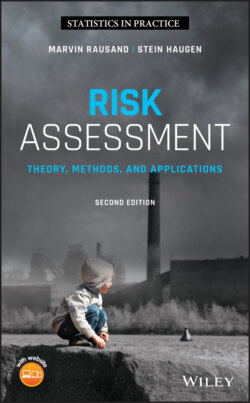Читать книгу Risk Assessment - Marvin Rausand - Страница 146
3.2.2.4 Step 2.4: Select Method
ОглавлениеA number of analytical methods have been developed for risk analysis. Many factors influence the choice of methods, some of which are as aforementioned:
In general, we need to choose a method that gives the answers required for the decisions to be made. This means that we need to understand the problem and the decisions to choose method.
If several alternative methods are available, we will usually choose the method that requires least work.
The acceptance criteria may determine which methods can be used. If quantitative criteria are given, quantitative methods must be used. If we do not have quantitative criteria, qualitative methods usually suffice.
Methods have been developed for special types of systems and for special types of problems. We, therefore, need to consider the system and problem type before choosing which method to apply.
If limited information about the study object is available, it may be more relevant to choose a coarse method than a detailed method. In early project phases, coarse methods are therefore often used, switching to more detailed methods later in the project.
Consider the availability of data before choosing method. If no or little quantitative input data are available, performing a quantitative analysis may not be possible.
Usually, there are time constraints on when the results need to be ready. This may place constraints on which method to choose.
The size and how complicated the study object is, will influence the choice of method.
There may be authority requirements, and/or relevant guidelines and standards that impose requirements and constraints on how the risk assessment should be performed.
An overview of the most relevant methods is given in Table 3.1 , together with an indication of the phase(s) of a system's life in which they are suitable.
Table 3.1 Applicability of analysis methods in the various phases of a system's life.
| Method (chapter) | Early design | Design | Operation | Modification |
| Checklists (10) | G | G | G | G |
| Preliminary hazard analysis (10) | G | B | M | M |
| HAZOP (10) | M | G | M | G |
| SWIFT (10) | G | M | M | G |
| FMECA (10) | B | G | M | G |
| Fault tree analysis (11) | B | G | G | G |
| Bayesian networks (11) | M | G | G | G |
| Event tree analysis (12) | B | G | G | G |
| Human reliability analysis (15) | B | G | G | G |
| Safety audits (7) | B | B | G | B |
G = good/suitable, M = medium/could be used, B = bad/not suitable.
